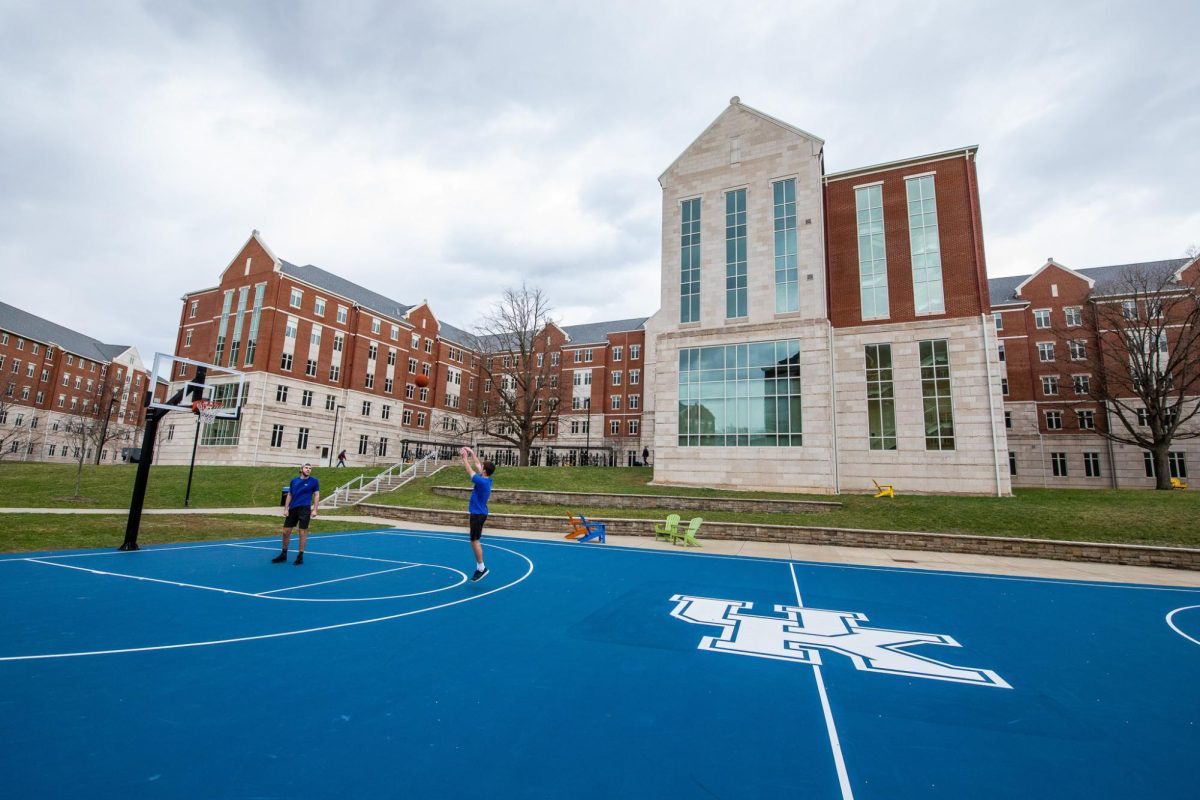For students, the most important spaces at the University of Kentucky are often found in the residence halls.
Whether the rooms offer a place to study, an opportunity to express creativity through decorations or take a much-needed nap after a wearisome day of classes, spaces inside the residence hall play a crucial role in students’ lives.
As I write this article, construction is currently underway for the new residence hall, situated near the University Flats and The 90. This construction not only presents a new space for students to reside but also an opportunity for UK to improve the way it designs its dorms.
With the appropriate features, this new residence hall holds the potential to provide the ideal space for students to live — especially through a personalized design.
Recognizing the necessary changes begins with understanding what residents UK considers the “intended audience” of this dorm — meaning, what kind of residents should this residence hall appeal to. Once the intended audience is identified, it should bear implications on how UK constructs the dorm.
One of the primary ways universities encourage community-building and academic growth is through living learning programs (LLP), which enable students with similar interests and aspirations to become roommates or share the same hall.
The residence hall’s design should complement the LLP it contains. To see the benefits of such requires looking no further than Holmes Hall, which provides the ideal space for the Creative Arts LLP.
As the UK website shows, Holmes Hall offers everything from writing studios, four solo music practice rooms to an art studio. It also contains classrooms that are primarily used by creative arts LLP students, whether to meet for events or classes like creative writing.
Why doesn’t every residence hall offer a similar structure? Rooms inside the residence hall should be designed in an intentional way to suit the needs of the unique group of students who will reside there.
This means that everything from the lobby to the study and recreational rooms should be tailored toward the particular LLP’s interests.
Why does having personalized spaces matter? The reason for students is abundantly clear. Every bedroom is uniquely decorated to reflect the student’s individual interests and aesthetic preferences.
Our rooms offer a unique opportunity to express creativity and make ourselves at home on campus. UK can create a better residence hall by following its students’ example.
Decorations can also be utilized in the same way. They should not clash together or exist without a purpose, but rather, complement the residence hall’s theme and interests, like how students add posters in their rooms that reflect their tastes.
For example, if the residence hall houses the engineering LLP, what are specific designs that would fit their interests? When designing rooms with this intentionality, students will feel more at home on campus.
It’s also important that UK rethinks its approach to the more practical spaces in residence halls, such as the kitchens, laundry rooms and recreational areas.
Are the kitchens large enough that students can gather and make meals in the comfort of their residence hall? Are there enough dryers and washer machines for the amount of students in the residence hall? Can recreational areas offer more than just a ping-pong table?
Asking and addressing questions like these will facilitate community-building among residents and increase student’s satisfaction with their dorm.
If these rooms are designed to accommodate the unique needs and interests of the residents, then more students will find themselves utilizing these spaces to meet with friends or have a quiet place to study.
In addition to LLPs, resident advisors (RA) also use study rooms to host events. UK should construct these study rooms in a manner that’s conducive for RAs hosting events.
With these changes, UK can create the ideal residence hall for students that encourages and supports their socialization, academic growth and sense of belonging.
































































































































































